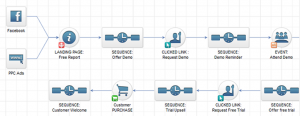— July 14, 2017

Free-Photos / Pixabay
With so much reliance on technology and communication happening through digital channels, it should come as no surprise that the interpersonal skills of entire workforces are deteriorating. Imagine being at a large conference with several of your employees when suddenly the president of your biggest client walks over and starts talking shop. Can you trust your employees to hold a professional conversation and represent your company? According to a survey of Fortune 500 CEOs, 75% of long-term job success depends on people skills and only 25% depends on technical knowledge. Implementing soft skills training for your employees results in career success for them, and business success for you.
Focus on Actions and Words
Starting with fundamentals can provide strong building blocks for a successful soft skills training program. Body language is an area that is often studied by science but that businesses tend to put on the back burner. Many employees don’t realize their bad habits or negative body movements until they are consciously looked for. It’s the same for workplace language. Using filler words such as “um” or constantly starting sentences with “so” can happen when one is nervous in an important client meeting, but recognizing such patterns that make employees seem less professional is the key to correcting them.
While these topics are covered in many tip-filled articles, it takes more than a five-minute read to change decades-old actions. Training for these areas is best accomplished by role playing and creating various scenarios to see how employees react. Bear in mind that, knowing they are being watched, they will attempt to be extra professional, but that’s ok. Going through the actions and then discussing each part of the interaction is the important part. Identifying areas that they did well will reinforce positive actions, while pointing out what could have gone better will be a reminder for the future.
Don’t Ignore the Digital Realm
Many draw a line between face-to-face communication and digital correspondences when addressing soft skills, but that is a grave mistake. With over 120 billion business emails sent per day, it’s important to implement soft skills training that does not ignore the digital realm. Have you ever read an all-caps email (with or without exclamation points) and imagined the sender to be angry? Do simple grammatical errors and forgotten attachments make you confident in the sender’s professionalism?
When it comes to digital communication, there is a wealth of records to refer to. When possible, ask an employee to produce a selection of sent emails they feel were perfectly professional and others where they recognize room for improvement. Analyzing these correspondences provides practical, real-world examples that are the most effective tools to train with. The digital workplace has an etiquette that’s all its own, and training must address it appropriately.
Taking Ownership Is Necessary
Building confidence plays a key role in improving soft skills. Most of the time, a lack of confidence stems from a lack of knowledge on a certain topic. When a customer expects your employee to know the answer to a question and they don’t, all the best verbal and nonverbal training can go out the window. Being put on the spot is difficult, but employees who take ownership of their roles and interactions are the most confident ones. That has a positive effect on every other soft skill, and ultimately produces a better customer experience.
Instilling a sense of ownership takes time and is not just a simple checklist of what to do or not to do. It’s a process that begins with every new project and requires the understanding of the unique factors that surround it. Employees should think about the “why” or “why not” behind each task and practice explaining the reasons behind each action. Not only can this anticipate client questions or concerns before meetings and calls, it places the employee in a confident position to assure customers that they will quickly find them a resolution to anything left unanswered on the phone.
Create a Teamwork Mentality
Whether or not the majority of an organization’s roles require a large amount of interaction, teamwork is still an essential part of soft skills training. The focus should not just be on training a specific team to work together on one project, but to teach transferable skills that can make one a productive coworker regardless of what team they’re on. That entails understanding one’s role and responsibilities within team dynamics, realizing which specific tasks are reliant on multiple teammates, and keeping the overall project objectives in mind. When possible, taking the time to administer effective employee surveys before, during, and after team projects can provide a tremendous amount of insight and direction. After all, building a great team environment translates to the better achievement of business goals.
How to Implement Soft Skills Training for Your Employees
While practice makes perfect, practicing bad habits will only reduce the effectiveness and professionalism of an employee and adversely impact the client and customer experience. Recognizing negative patterns, knowing the necessary corrective action, and implementing a productive soft skills training program takes time and expertise. For those unable to dedicate the resources to such a project, partnering with experts in soft skills and other training programs is the most effective solution.
Business & Finance Articles on Business 2 Community
(97)
Report Post



